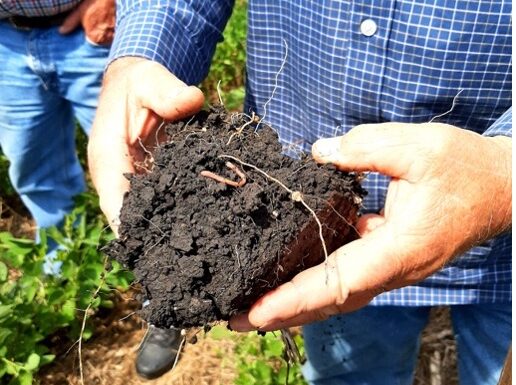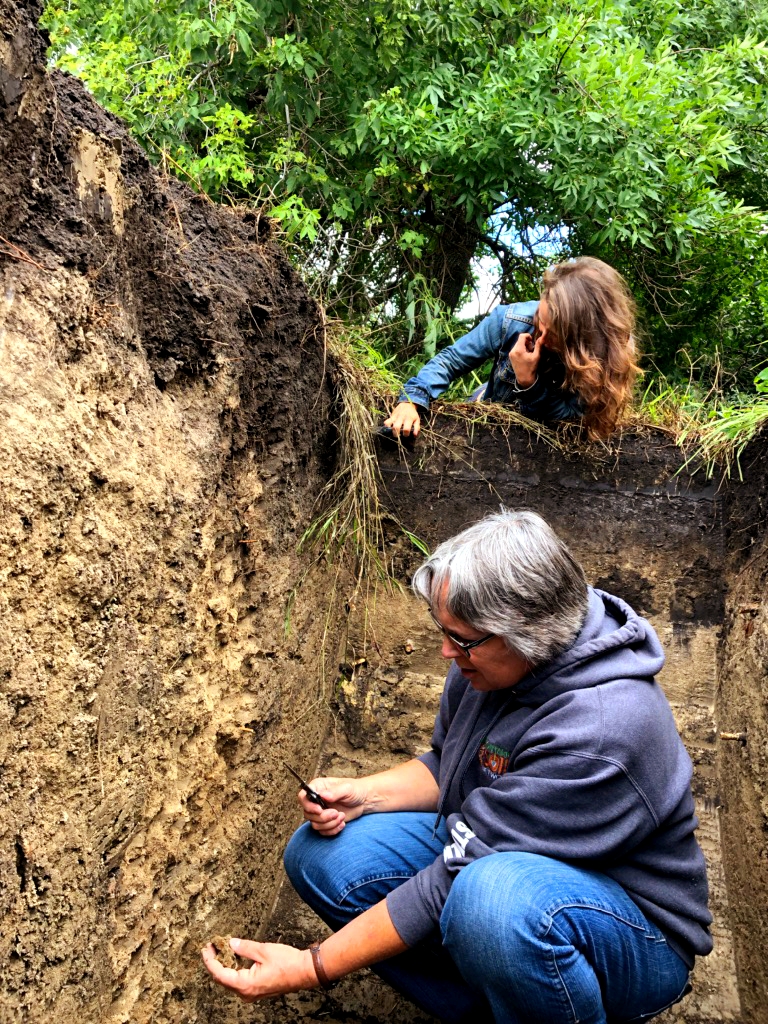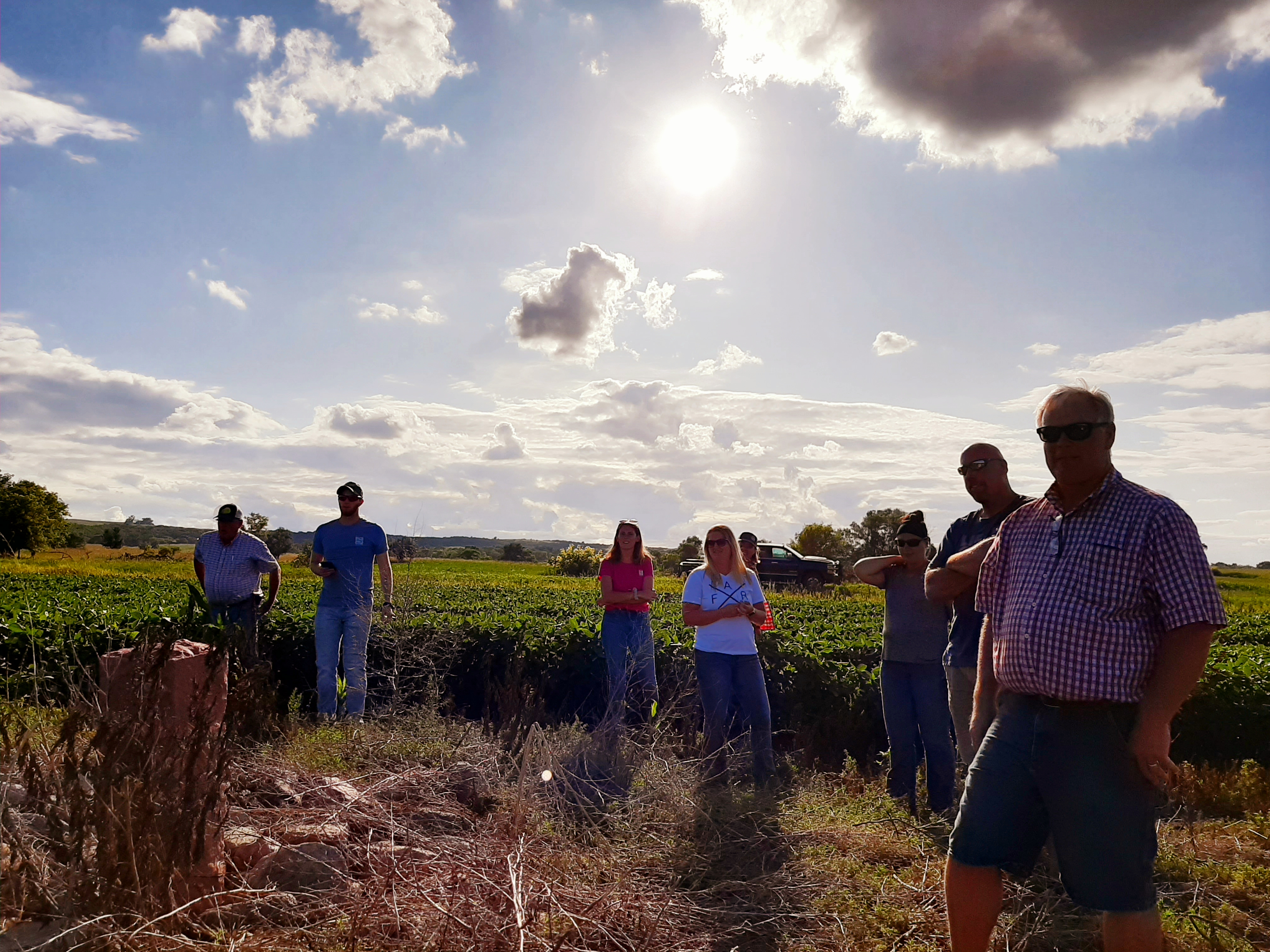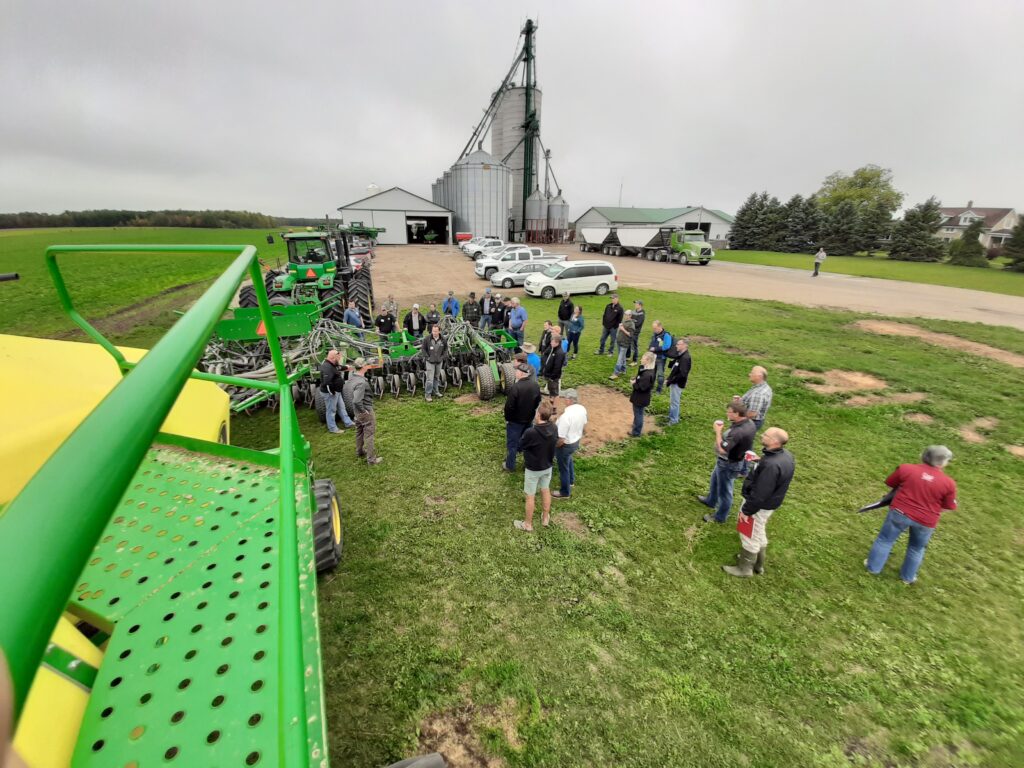Trust and Community – The True Keys to Soil Health for a Sustainable Future


Tori Waugh, Principal Consultant at Conservation Ag Consulting shares how her approach has led to transformational impacts in the farming community. Her consulting firm creates and delivers essential soil innovation programs for six Ontario ENGOs, a variety of conservation authorities, connects 600 members of the Innovative Farmers Association of Ontario and the Ontario Soil Network and has influenced an estimated 2,500 agricultural businesses in the way that they treat soil and soil health across some 180,000 acres.
Soil is the foundation of life on land. Many civilizations have farmed themselves out of existence – and they’ve done it organically. There is no generic soil-perfect solution in agriculture – the best solutions are specific to the individual, place-based, and market-dependent. With that messiness in mind, it’s the outcomes of farming practices that will guide us to a better future.

often even within a field – how that soil is best
managed to be healthy should be different from
place-to-place too.
Soils can make or break water quality in our Great Lakes, control flooding and manage drought risks, mitigate climate change, and cycle nutrients for food, fuel, and fiber. Agriculture transformed once with the green revolution. The next green revolution needs to integrate climate, soil, and water security at a global level, while improving food security.
The potential for well-managed soils to contribute to a sustainable future is why we stand on decades of efforts to improve soil health in Ontario by supporting farmers. With: well-managed financial incentive programming, some of the most committed extension specialists in North America, top-ranking universities for agricultural sciences, strong farm organizations and not a single farmer in Ontario unaware of the practices they can implement to sequester carbon – why aren’t we there yet?
Abraham Maslow is often quoted: “If all you have is a hammer, everything looks like a nail”. We’ve been hammering cost-share, awareness and education for a long time and are now beginning to explore the human dimensions of change. Social networks and norms are my hammers, because by design they include everyone else’s hammers to work together to influence innovation diffusion.
Since founding Conservation Ag Consulting (CAg-C), I have contributed to an industry-wide transition to programming that reflects the power and complexity of our communities and applied social network research to inform and evaluate innovative methods of education and incentivization. I have seen that when we place value on the outcome rather than the strategy of programs, a whole world of creative solutions presents itself.
CAg-C arose out of the reality that many early-career environmental professionals working in the non-profit sector face: contract-to-contract work with few opportunities to dig in, try fresh new ideas and make an impact. By putting myself in the driver’s seat, I’ve been able to develop projects into non-profits, pivot existing non-profits for greater impact, and create unconventional partnerships across sectors to pilot, inform and evaluate novel program methods. The initiatives that CAg-C leads benefit the common knowledge of both sectors and improves Ontario’s capacity for supporting innovation diffusion.

In creating innovation diffusion programming I’ve learned that it’s important to step back and ask, ‘What are we communicating by doing this?’ Our effect on social networks and norms is unavoidable, so it might as well be intentional. Early on, while delivering financial incentive programming – a standard reimbursement for soil protecting activities – I saw what many program delivery agents see: the same faces, no new soil being protected. So, I began asking “why?’ Sociologists have identified some potential reasons: at best, we associate the practices being incentivized with risk. Worst case scenario: these incentives are falling to the same fate as participation awards. There are very real financial barriers that farmers face when adopting a new sustainable practice, but financial incentives cannot be the sole method of influencing adoption. So, if we focus on the outcome – what other opportunities are there?
Since starting CAg-C in 2018, I’ve played a key role in launching 5 sustainable agricultural programs that incentivize carbon sequestration and water quality protection, while simultaneously supporting rural communities to lean into leadership roles at the front line of sustainability solutions. Evaluations of these program have helped to define best practices for maximizing the impacts of incentive programming – and it all revolves around social networks.
Networks are not only important to innovation diffusion, but to innovation itself. CAg-C has begun to validate and calibrate the use of predictive models of innovation diffusion in collaborative development research to support the innovations and practices that may hold more potential for public good than they do direct commercialization. Identifying an innovation’s commercial potential in a way that’s inclusive of public good, will allow for the kind of information needed for strong private-public partnerships. Drawing in farmers to the collaborative development of such innovations allows for communities of practice to develop around an innovation, fast-tracking its success.
The success of the programs that I’m involved in is due to the practical knowledge and cultural symbols being constructed by the stakeholders themselves. Many studies point to the importance of networks, network diversity, centrality (i.e., how many people you know) and perceived shared experience between individuals in accepting and acting on information. Given the structural and social impacts of network centrality, trust, and social capital, my work has shown that an organization is best served by focusing its programming to position community members who are adopting the desired practice as leaders in advancing their community.

Defining and calibrating what good leadership looks like is also incredibly important. It doesn’t take more than a few minutes on Twitter to see how our soil crisis might be exacerbated by the way we communicate about it. While we all care about soil, how we manage it has become a polarized debate. Promoting cover crops or no-till through ‘evangelism’ does more harm than good (causing mis-learning), and excessive contemplation (navel gazing) leads to cycles of uncertainty and inaction. As unexciting as it is, when it comes to industry-wide change, moderation and steady progression is key. The greatest impacts on rate of learning are an individual’s private observations and yes – network centrality.
Social networks are an enormous force for influence. While recognizing soil degradation is important, attributing some degree of personal duty for it is necessary for action. This is often most strongly influenced by injunctive norms: ‘Do others want me to do it?’ This type of norm can be leveraged to influence action – but it’s complicated. Injunctive messages will not always affect conservation behaviours. No matter the popularity of a message, successful outcomes will be more likely if stakeholders tuning into the message are doing so in the company of others in their community. People also need to know ‘Will I be successful?’ Answering this question is imperative to turning an intention into an action and is largely influenced by the answer to the question ‘Are others doing it successfully?’ Sharing experiences and identity with role models is important for audience members to visualize their own success.
Through my work thus far, I have found that trust and community development should be the overarching goals of any program to successfully navigate social norm and network strategies, and that the impact can be incredible and long-lasting. Building a community of practice around an innovation or embedding a practice into a common-held sense of identity, you begin to shift how people see themselves – from individuals making their business work, to leaders capable of bring forth the next green revolution.

















